
Tools exist for a reason.
You wouldn’t try to hammer a nail with your fist, or drill that nail into the wall. Neither of those will work—one of those will probably hurt you.
In the same way, manually sending out 100 individual emails doesn’t really work. You waste time and probably make a couple of mistakes along the way—misspelled names, typos, etc.
To get the best results from your effort and investment, it’s important to select the right eCommerce marketing platforms to drive your acquisition and retention.
We’ve compiled a list of 20 tools categorized into four types of B2B eCommerce software:
- Website and landing page builders
- Automation tools
- Content creation tools
- Analytics tools
Let’s get into it.
4 eCommerce website and landing page tools
Your website and online storefront should all be part of your digital marketing strategy. Choose your website builder based on your brand’s specific needs and your team’s skills.
Ideally, you want something that you can customize easily, build product pages with, and integrate with other tools. If you have no coding experience, then you’ll want a drag-and-drop builder.
Here are the four tools we recommend for everyone, from small businesses to enterprises, along with their key features.
1) Shopify – Built for eCommerce sites
Shopify is the eCommerce platform built for online sellers and business owners.
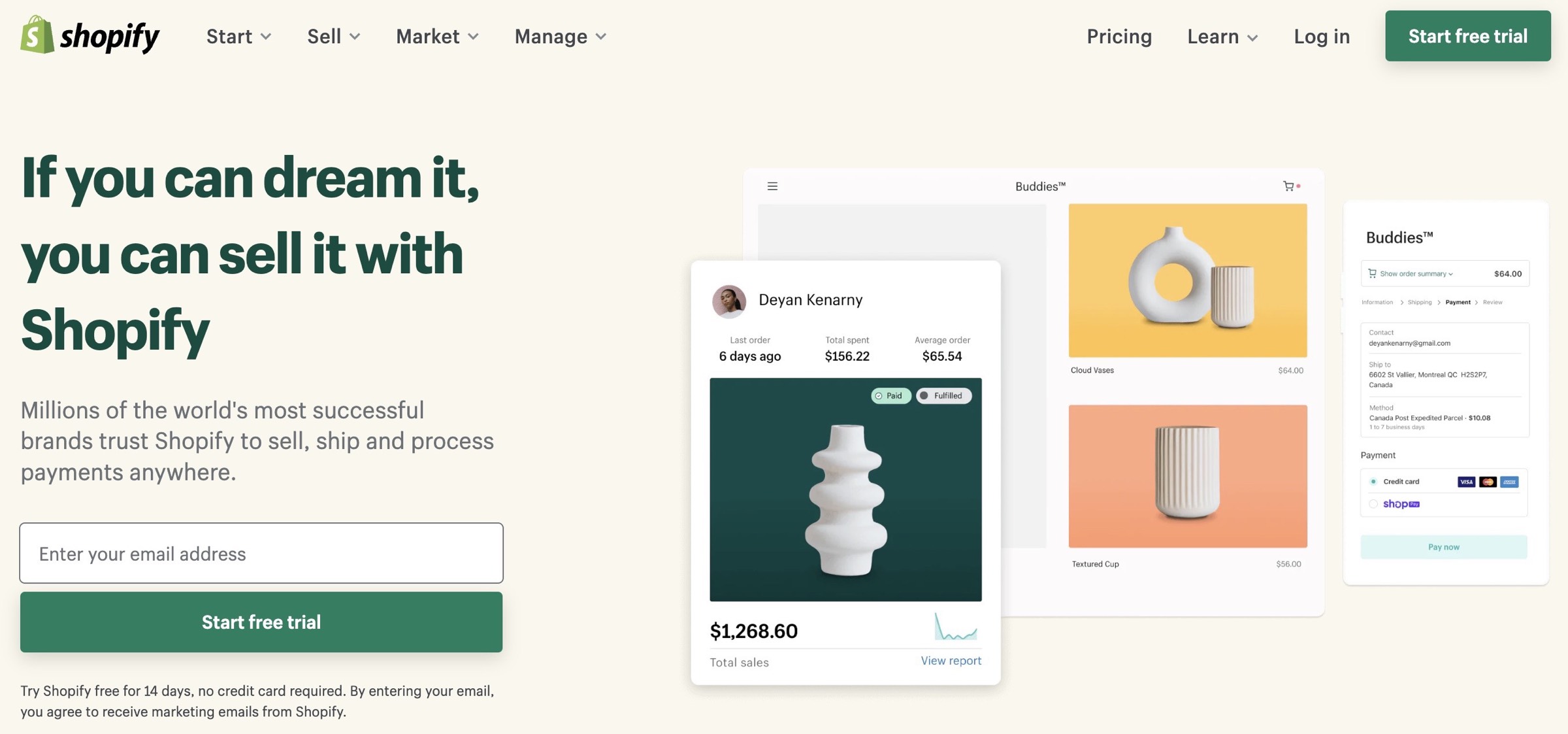
Shopify has a 32% market share in the US. That means one in every three eCommerce shops is run through Shopify. That also means that it’s highly unlikely that their sellers will ever need to migrate their shops on short notice.
Since Shopify is currently the biggest eCommerce platform, most tools have Shopify integrations.
The only downside of Shopify is that their websites are not as easily-customizable. While their templates work great, you’ll have to choose a higher tier to gain more control over how your product pages look.
Notable Features
- Reliable, with full eCommerce functionality—including product pages and a POS system
- Great functionality for businesses of all sizes
- Hundreds of templates and over 6,000 apps (+ even more integrations)
Pricing
Shopify’s pricing plan is pretty straightforward. After a 14-day free trial, you choose one of their five tiers:
- Starter – US$5 per month
- Basic – US$29 per month
- Shopify – US$79 per month
- Advanced – US$299 per month
- Shopify Plus – custom pricing (starting at US$2000, contact Shopify)
As of writing, they also offer a 50% discount for customers who pay on a yearly basis.
Head over to their pricing page for more details.
2) Squarespace – Drag-and-drop website builder
Squarespace lets you build your website without needing to code a single thing.

While it started as an easy-to-use, static website builder, Squarespace has now evolved into one of the top eCommerce website builders for solopreneurs and small business owners.
They offer hundreds of templates, making it as easy as possible for you to build your online store. The only downside is that Squarespace isn’t as customizable as other non-drag-and-drop builders. They don’t let Personal plan users add CSS and JavaScript codes to their websites and only allow integrations for their higher-tiered plans.
The upside is that Squarespace’s customer support team is reliable, and they have a video studio to help you create more engaging content.
Notable Features
- Fully-hosted webpages with unlimited storage and bandwidth
- eCommerce features for all tiers above Personal plan
- Drag-and-drop builder with beautiful templates optimized for conversions
Pricing
Squarespace’s pricing model is fairly straightforward. You start off with their two-week free trial, and then you can pick from one of four plans:
- Personal – US$23 per month
- Business – US$33 per month
- Basic Commerce – US$36 per month
- Advanced Commerce – US$65 per month
As of writing, they offer a 30% discount for customers who pay by the year.
They also have enterprise solutions for bigger eCommerce businesses.
For more details, check out their pricing page.
3) Elementor – WordPress website builder
Elementor is a drag-and-drop editor for websites that run on the WordPress CMS.

If you have a WordPress site, then you likely already have access to a free version of Elementor, which you can find in your plugins tab.
The tool has a visual editor that allows you to manipulate any part of your current theme, create landing pages, and more. It lets you preview your changes as you go for any device that you choose—desktop, tablet, or mobile.
Tip: If you use Elementor, you might need to keep an eye on your site speed (an important factor for SEO).
Notable Features
- User-friendly UI that makes it easy to customize your website, even without a technical background
- Integrates with other marketing tools like ActiveCampaign and MailChimp
- Responsive design capabilities, making it easy to optimize your site for all devices
Pricing
Elementor’s pricing model comes with two options.
Their website builder bundled with hosting services is US$99 per year.
For their website builder alone, they have three tiers:
- Essential Plan – US$49 per year
- Expert Plan – US$199 per year
- Agency Plan – US$399 per year
To get full details, head to their pricing page.
4) Leadpages – Landing page builder
Leadpages helps you build landing pages that convert.
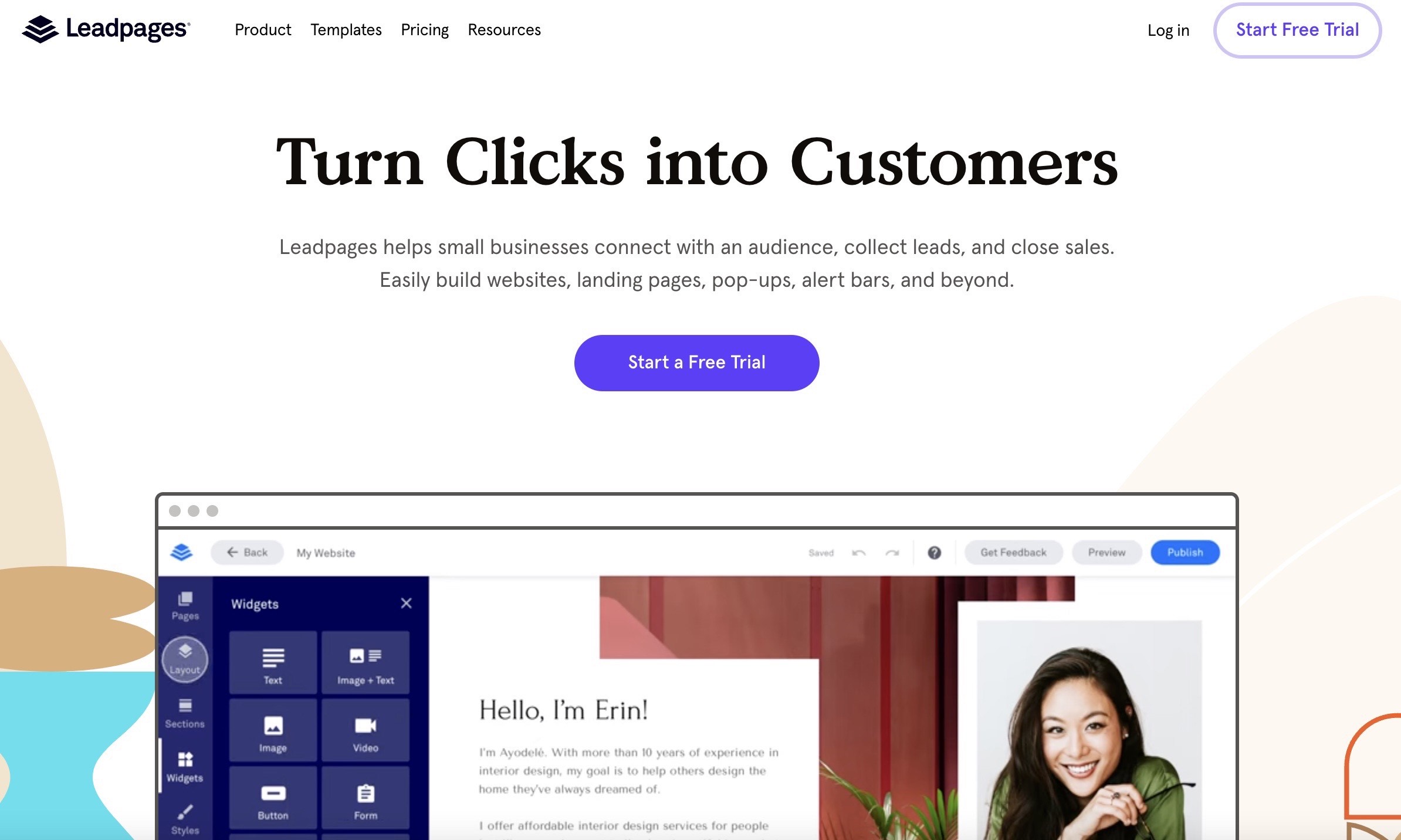
Leadpages has website and landing page templates, a drag-and-drop builder, pop-ups, alert bars, and other features that help small business owners connect with their target audiences. They allow users to A/B test landing pages to maximize conversions.
While Leadpages has many notable features, one their biggest benefits is that users can arrange landing page templates by conversion rate. This is an excellent fast track to turning clicks into customers.
Leadpages is focused on serving small businesses, so they may not have the features that growing and enterprise businesses are looking for.
Notable Features
- Hundreds of landing page templates optimized for conversions
- User-friendly drag-and-drop landing page builder
- Conversion features like on-page pop-ups (e.g., exit-intent pop-ups, survey pop-ups, etc.) and alert bars
Pricing
Leadpages is another platform that offers a 14-day free trial.
After the free trial, you can choose from one of two plans, both of which support unlimited traffic:
- Standard – US$49 per month
- Pro – US$99 per month
They also offer discounts for those who pay yearly and advanced plans for users who need more functionality.
Get more info from their pricing page.
5 eCommerce marketing automation tools
After you choose your website builder, start thinking about how you can save time while getting better results.
Marketing automation tools do the heavy lifting for you so that you can spend your time doing other, more important, tasks. They also study your target audience and help you optimize your campaigns based on data, producing better results.
Here are five eCommerce marketing platforms that we recommend for all types of business owners.
5) Mailchimp – Easy email automation
Mailchimp has become an all-around growth marketing tool—but their email automation feature is still easily their best product.
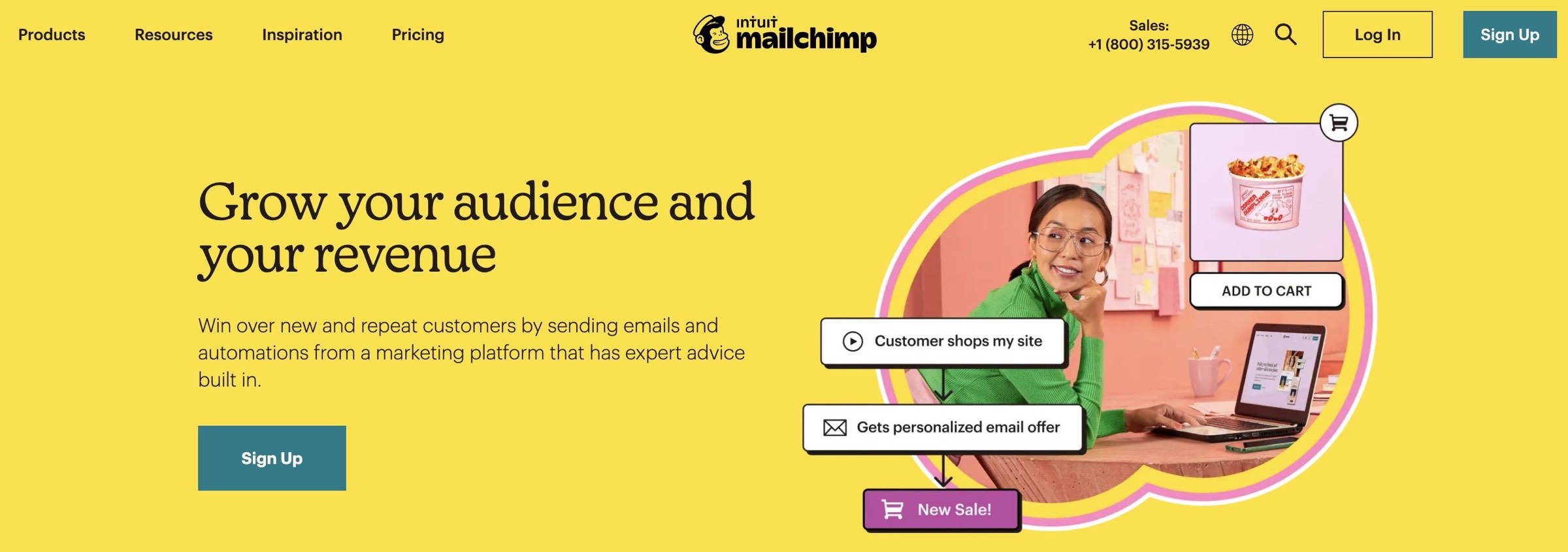
Mailchimp’s email automation tool includes basic features like contact list uploading, email scheduling, and campaign building. What sets Mailchimp apart from other email automation tools is how easy it is to use and integrate with other eCommerce platforms.
It also gives users the flexibility to use an existing email template for their marketing emails, or code their own through HTML and CSS blocks.
Their straightforward drag-and-drop builder makes it user-friendly for both beginners and expert marketers alike. In addition to that, they collect and provide data for each email campaign you run, making it easy to figure out what works and what you need to change.
Notable Features
- Hundreds of customizable email templates for those with no coding knowledge
- Hundreds of integrations perfect for business owners (e.g., Facebook page integration)
- Understandable data dashboard
Pricing
Mailchimp’s pricing model is slightly complex, dependent on subscribers and the number of emails you wish to send out. If you have 500 contacts or fewer, they have four marketing platform plans available:
- Free – $0
- Essentials – $US17 per month
- Standard – US$11 per month
- Premium – US$299 per month
The more contacts you have, the more you have to pay. They also have a different set of plans for transactional emails.
Get the full list of their plans here.
6) Buffer – Simple social media automation
Buffer is an affordable yet powerful tool for social media scheduling.
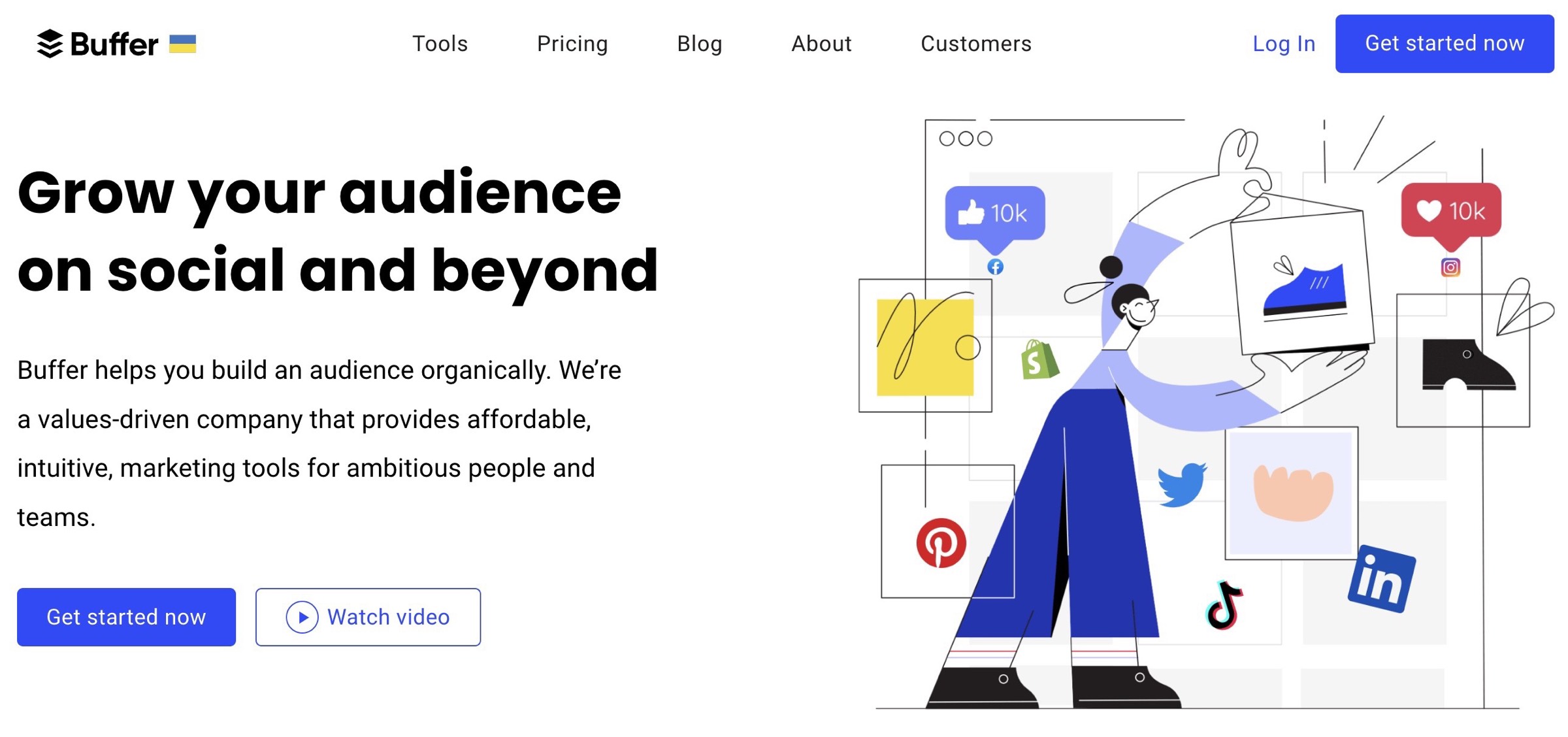
Apart from scheduling, Buffer also has tools to help you create your posts, find out when the best time to post is based on your account performance, and track post performance to know what’s working best.
Notable Features
- Integrates with all major social media platforms—Facebook, Pinterest, Instagram, LinkedIn, Twitter, and TikTok
- Landing page and link in bio tools
- Comprehensive analytics dashboards
Pricing
Buffer currently offers four plans:
- Free – $0 per month
- Essentials – US$6 per month per channel
- Team – US$12 per month per channel
- Agency – US$120 per month per 10 channels
They offer a 14-day free trial on all their paid plans.
As of writing, they also offer discounts (2 months free) for annual payments.
Get more information here.
7) Omnisend – SMS marketing automation
Omnisend is an omnichannel marketing automation tool for eCommerce businesses of all sizes.
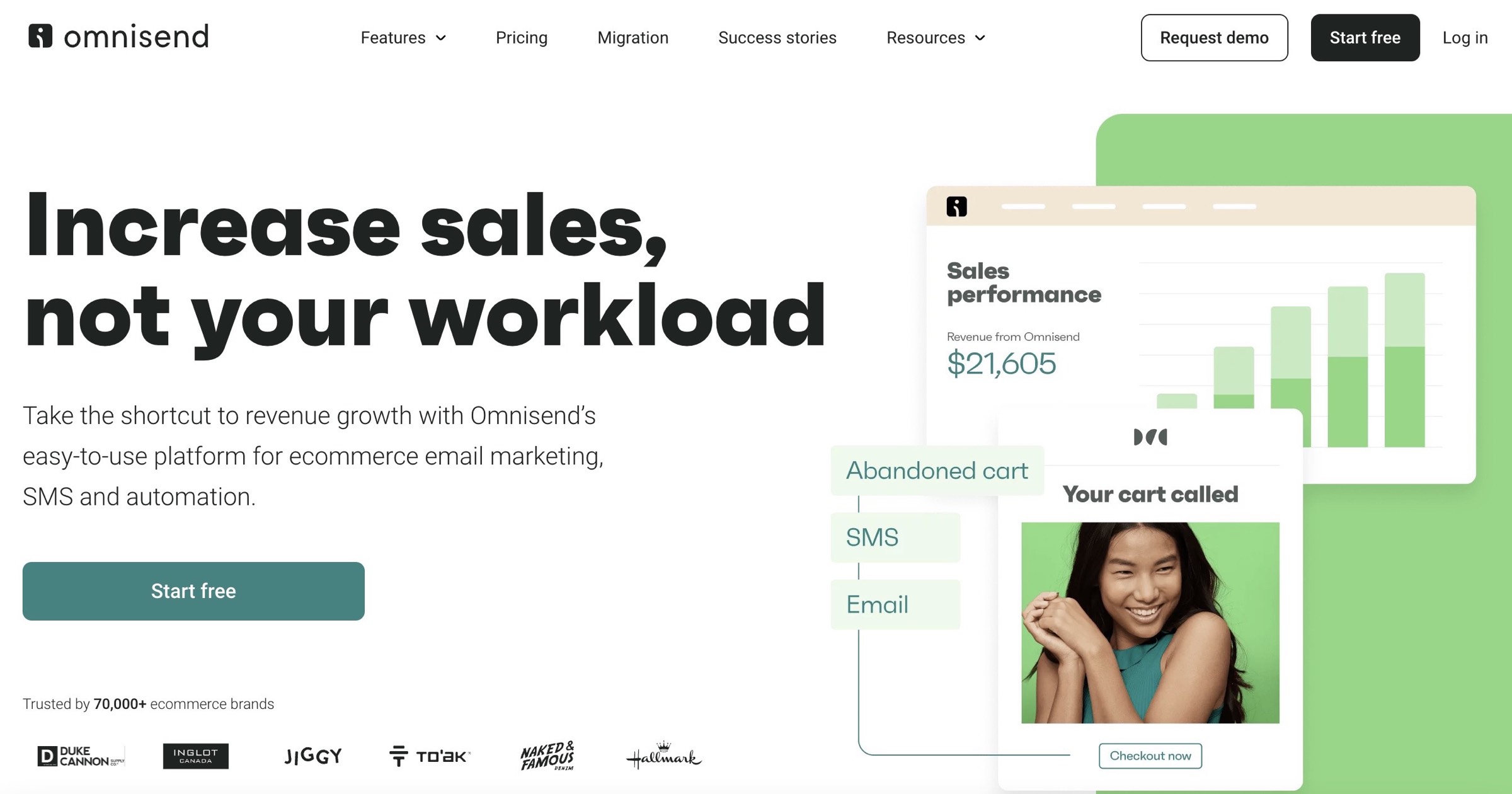
Omnisend touts a platform that can centralize all your marketing efforts—from your social media to email campaigns.
Omnisend differentiates itself by allowing users to create, personalize, and send SMS campaigns to their customers. Since the tool was designed specifically for eCommerce businesses, they collect all the right data to make sure that you know what’s working and how to boost your bottom line.
Notable Features
- All-in-one dashboard with a variety of templates for different platforms
- List segmentation for your marketing campaigns
- Robust analytics dashboard to track your manual and automated marketing results
Pricing
Similar to Mailchimp, Omnisend’s pricing model depends on how many contacts you have.
Here are their email plans for if you have 500 contacts or less:
- Free – US$0 per month
- Standard – US$16 per month
- Pro – US$69 per month
You can also buy additional SMS and MMS credits. The price changes depending on what country you want to reach.
Find out more about their plans here.
8) LimeSpot – AI-powered conversion optimization
Personalize your user experience through LimeSpot.
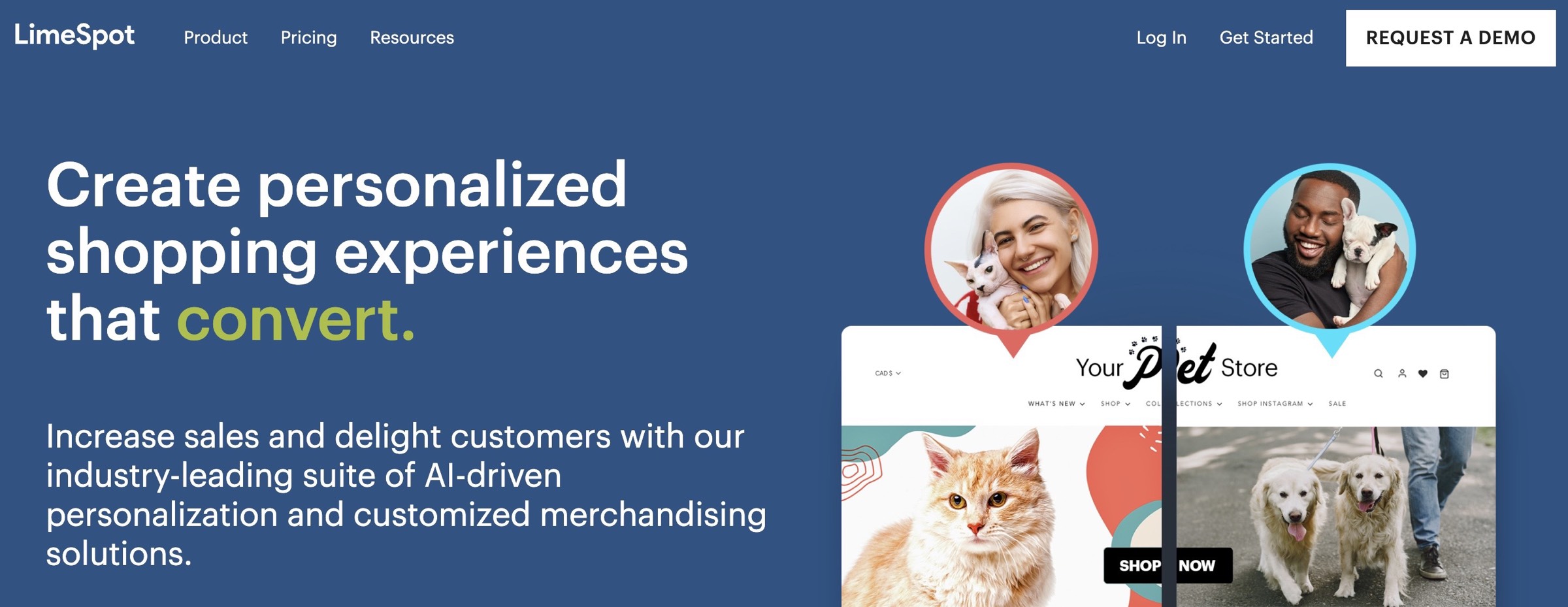
LimeSpot uses AI to learn more about your customers so that it can automatically deliver a personalized experience.
For example, if you have a pet store (as seen above), your cat-loving customers will see a picture of a cat along with cat products on your homepage. Dog lovers, on the other hand, will see items for dogs.
The same AI technology can also personalize your email campaigns, segment your audience, and recommend related products that your customers might also be interested in.
Notable Features
- Automated personalization across different marketing channels (including your online storefront)
- Easy integrations with other eCommerce tools
- Real-time data analytics
Pricing
LimeSpot’s pricing is based on your store’s revenue.
The starting rate for all their plans are:
- Essential – US$18 per month
- Pay As You Grow – US$15 per month
- Premium – Custom price (contact LimeSpot)
Then, they adjust your pricing as your revenue increases. For the Pay As You Grow plan, for example, they collect 2% of “LimeSpot Driven Revenue after first US$750 per month.”
Learn more about their pricing scheme here.
9) Klaviyo – Email and SMS automation
Klaviyo helps you manage and master email marketing. They also support automated SMS campaigns so you can reach your audience and generate leads faster.
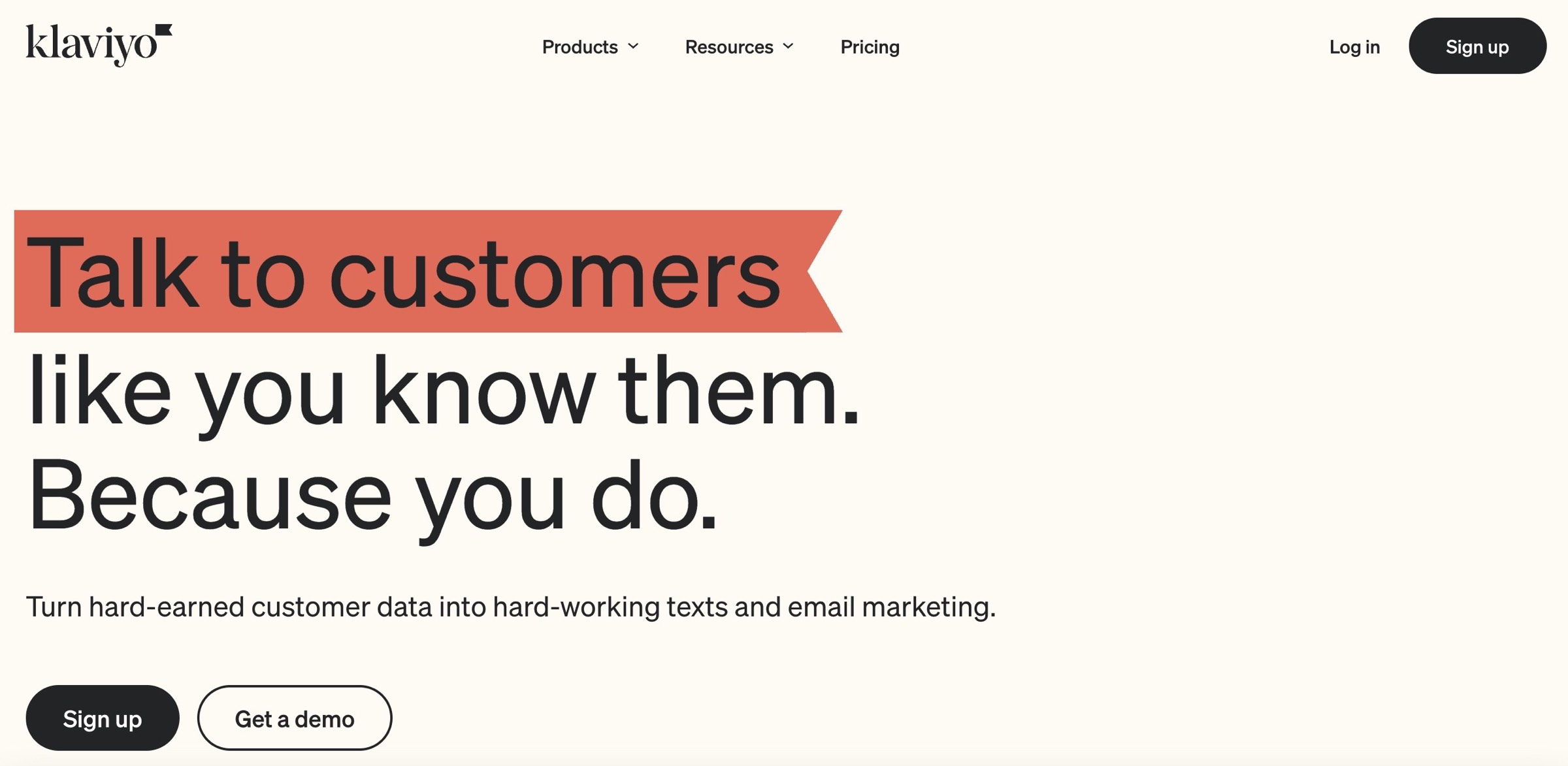
Klaviyo automates the entire email and SMS marketing journey—from generating leads to segmenting and nurturing them.
You can build your lead form right within Klaviyo’s backend and set your form up as a pop-up or teaser.
When your forms generate leads, Klaviyo can auto-segment them into specific groups. So for example, each subscriber can filter into a different list based on their interests. That way, every member of your mailing list receives relevant, personalized emails and texts.
Notable Features
- Automated email campaigns and text messages that you can schedule for optimal times
- User-friendly templates for flows that convert (including an abandoned cart flow that draws potential customers back in)
- Data-backed segmentation that allows you to personalize your marketing
Pricing
Klaviyo has three pricing plans based on the services you need and the number of contacts you have.
If you have less than 250 contacts, you can avail of their free plan.
If you have 251 to 500 contacts, here’s what the plans look like:
- Email – US$20 per month
- Email and SMS – US$35 per month
If you have more contacts, check out their pricing plan calculator.
6 eCommerce content creation tools
Content creation is a big part of your marketing. Content encompasses everything—from the copy you put on your website to the blog posts you write and the videos you publish on social media.
Here are six content creation tools to make your life a little easier.
10) Canva – Graphic design for all
Canva has templates, photos, stickers, and layouts that make graphic design easy even for non-creatives.
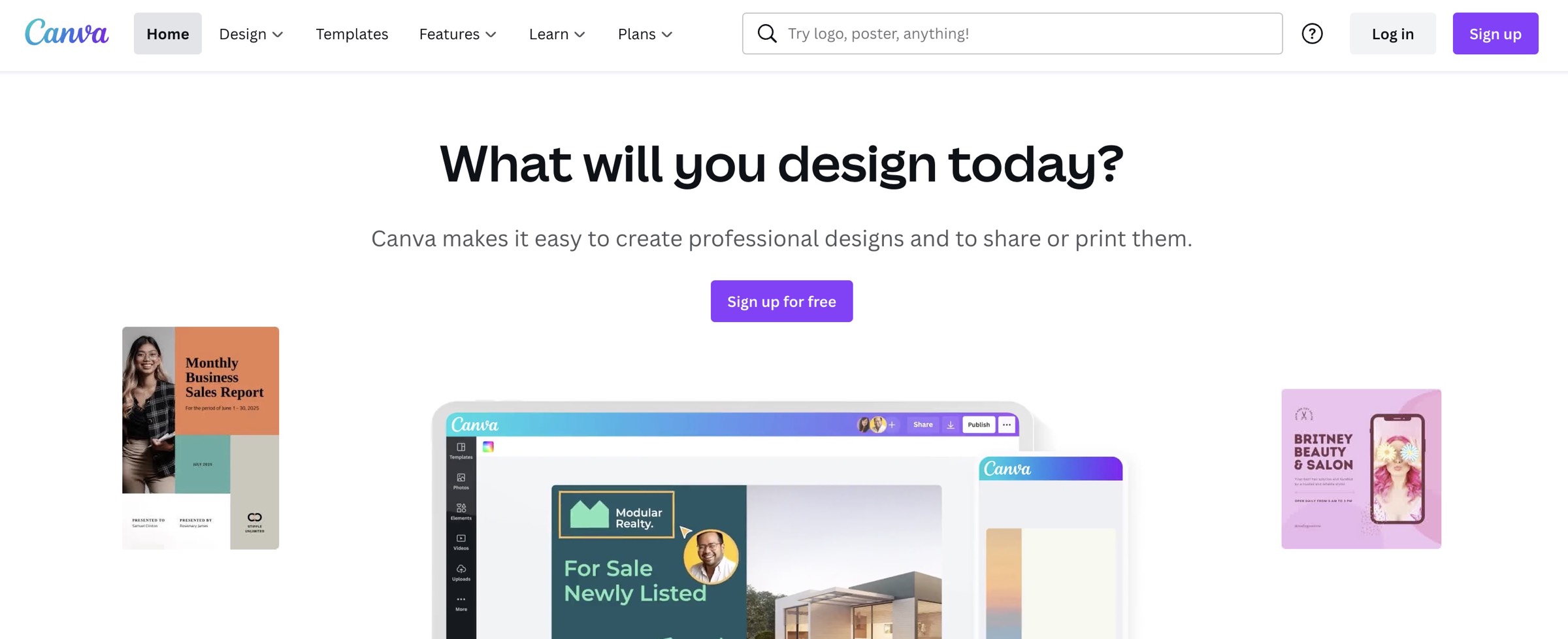
Canva’s goal was to make graphic design a bit easier for people who aren’t in creative fields. And they succeeded.
They’ve got thousands of beautiful templates for everything from web pages to social media posts and presentations. They also have stock photos and stickers to add some spice to your designs.
Paid plan users can build their own brand kit so that Canva stores brand colors, logo, and fonts.
Notable Features
- Hundreds of customizable templates, free and premium photos, and create stickers
- Drag-and-drop designer that makes it easy to visualize your designs
- Brand kit for paid users
Pricing
Canva has three plans for eCommerce marketers. They have a free plan for everyone and two paid plans with more functionality:
- Pro – US$12.99 per month per 5 people
- Enterprise – US$30 per month per person
As per usual, you get a discount if you pay by the year.
Check out their pricing page for more info.
11) Google Docs – Easy document collaboration
Google Docs makes it easy to collaborate with everyone on your team.
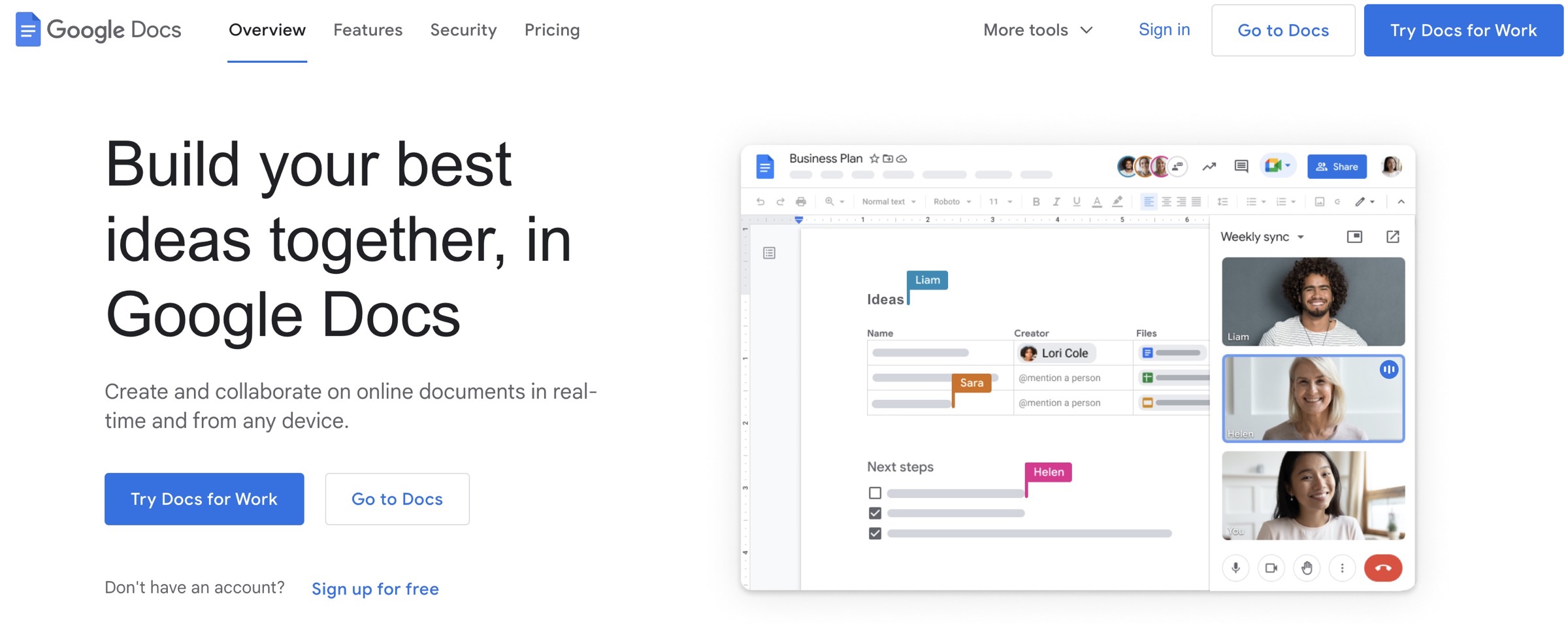
Google Docs was built to encourage collaboration within teams, no matter where your teammates are. Everyone with the right access levels can leave comments, suggest changes, and communicate right within each document.
Notable Features
- Collaborative features like comments and suggestions
- Single-page mode that makes it easier to write and visualize your blog post
- Auto-saved version history, so you never lose your ideas
Pricing
Google docs is free for personal use. To use docs with your team, you’ll need to get a Workspace plan.
They have four plans available:
- Business Starter – US$6 per month
- Business Standard – US$12 per month
- Business Plus – US$18 per month
- Enterprise – custom pricing (contact Google sales)
Learn more about Google Workspace pricing here.
12) Grammarly – Powerful spell-checker
Grammarly does more than just check for run-on sentences and typos. It also uses artificial intelligence (AI) to look at whether or not your word choice and phrasing are strong enough to help you achieve your chosen goal.

Before you start writing, you can set:
- Your target audience’s knowledge level: General, Knowledgeable, Expert
- Your level of formality: Informal, Neutral, Formal
- The platform you’re writing for: Academic, Business, General, Email, Casual, Creative
- Your tone: Neutral, Confident, Joyful, Optimistic, Friendly, Urgent, Analytical, Respectful
While you’re writing, a sidebar appears on the left-hand side of your screen to show you how many mistakes you’ve made, what you can edit for conciseness, and so on.
Grammarly also offers a plagiarism checker that compares your work to millions of other pieces of content on the internet.
Notable Features
- Robust and accurate spelling and grammar checker with goal-oriented suggestions
- Plagiarism checker for paid users
- Style guide checker for business users
Pricing
Grammarly has a free plan and two paid plans:
- Premium – US$12 per month
- Business – US$15 per member per month
Learn more about their different features on their pricing page.
13) Yoast SEO – WordPress content optimizer
Yoast focuses on optimizing your content for search engines to help you rank on the first page for your target keywords.
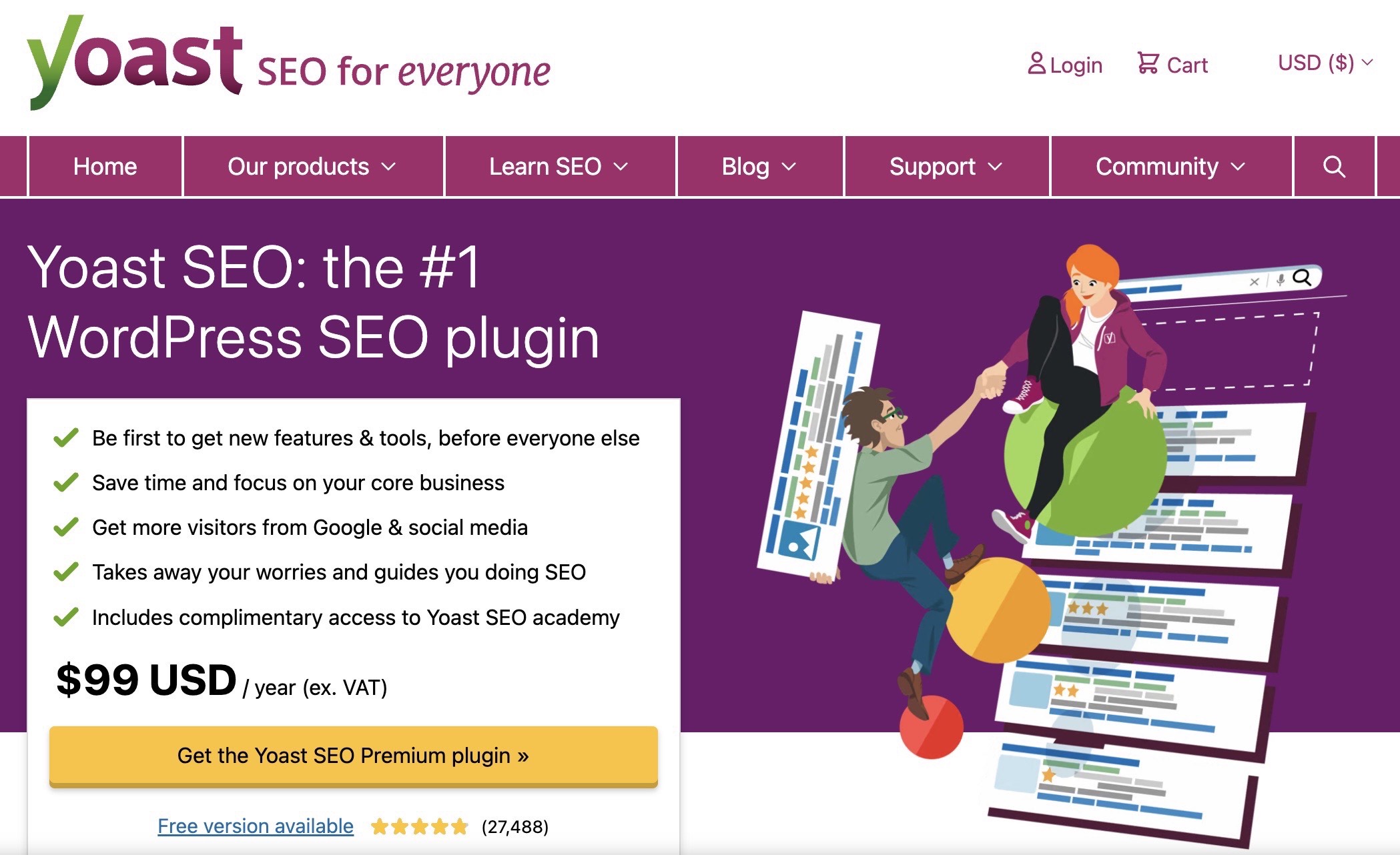
Yoast is a WordPress plugin that shows you what to do to rank on Google in a simple, visual, and easy-to-understand way.
As soon as you plug your content into WordPress, Yoast starts checking it for various SEO requirements like sentence length, keyword use, and repetitiveness.
It also grades your titles, shows you what your URL slug will look like, and so on.
Notable Features
- Integrates directly with WordPress
- Checks your writing for SEO best practices and keywords
- User-friendly and perfect for beginners
Pricing
Yoast SEO offers a free plugin plan for casual users, and two paid plans for those who need a little more functionality:
- Yoast SEO Premium plugin – US$99 per year
- Plugin subscription – US$22 per month
Learn more about their plans here.
14) Ahrefs – Comprehensive keyword research tool
Unlike Yoast, Ahrefs won’t edit your writing as you go. But it can give you keywords, tell you what your competitors are ranking for, and so on.
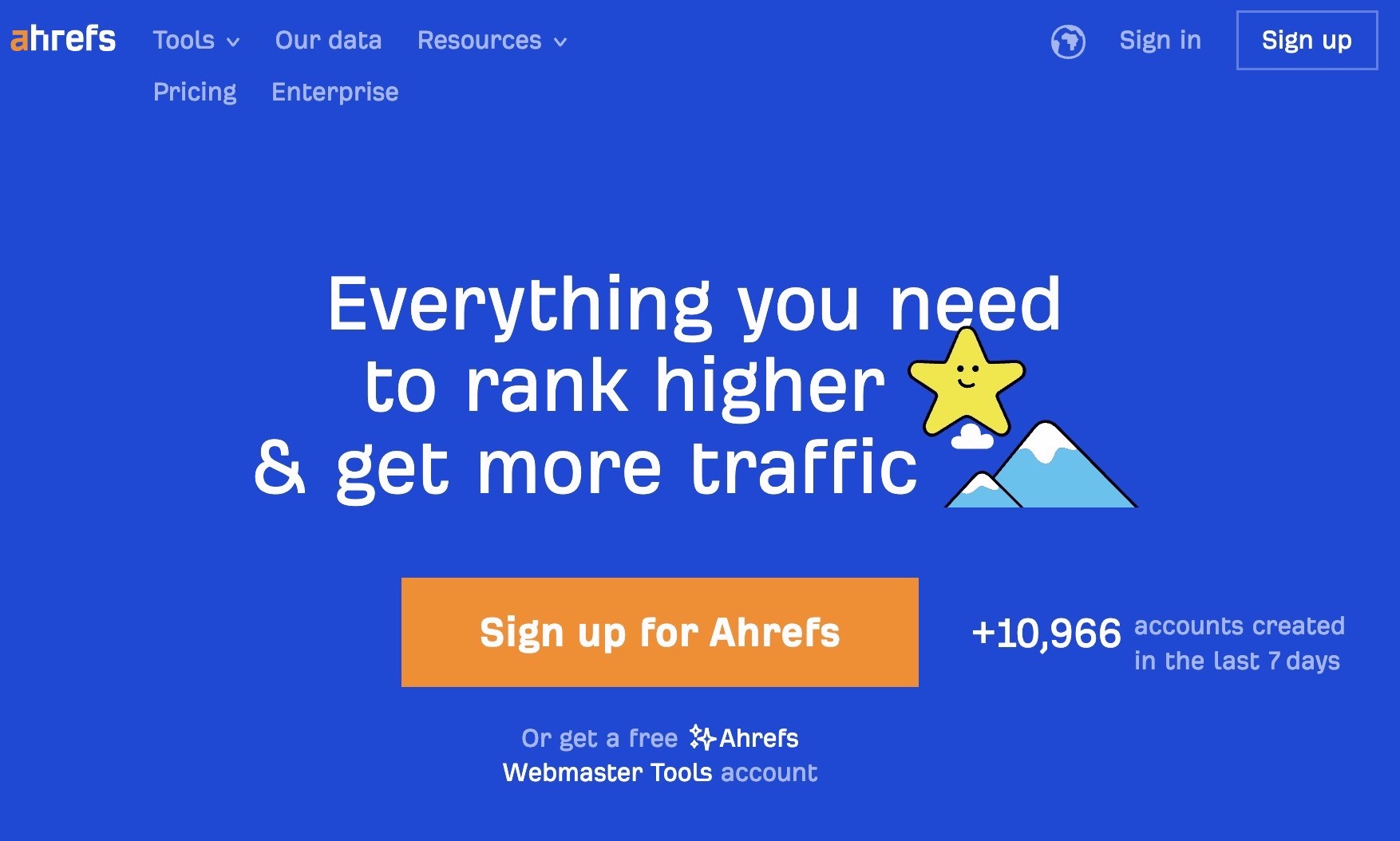
Ahrefs is a keyword research tool. Meaning that it can tell you how many people search for any given keyword per month. It also tells you how difficult it is to rank for those keywords, should you want to compete for those rankings.
In addition to keyword research, Ahrefs also lets you look into how your competitors are doing, revealing what keywords and phrases they’re ranking for and what topics they’re writing about.
Notable Features
- User-friendly keyword research tool with comprehensive data
- Competitor analysis for content ideation
- Backlink analysis and link building features to help you increase your site’s authority
Pricing
Ahrefs has three paid plans:
- Lite – US$99 per month
- Standard – US$199 per month
- Advanced – US$99 per month
They offer a 16.67% discount for customers who pay annually.
Learn more about their plans here.
15) Ubersuggest – Affordable SEO tool
Ubersuggest is a budget SEO tool that includes keyword research, backlink analysis, site audit tools, and much more.
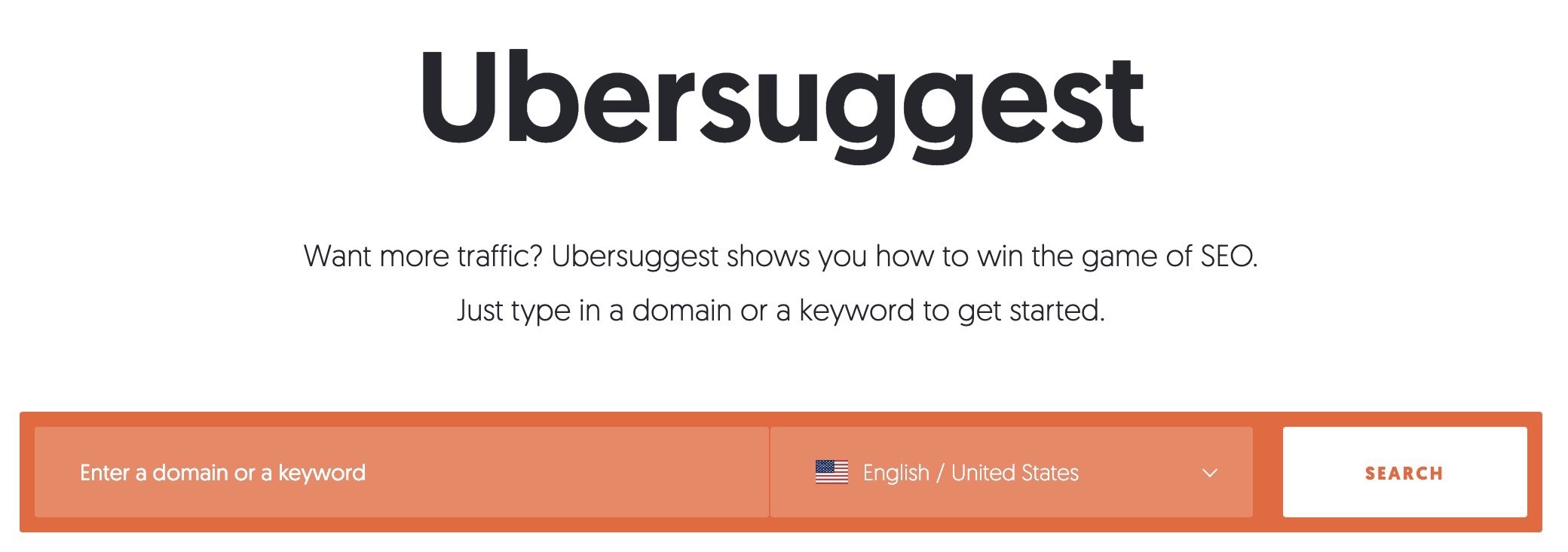
Ubersuggest is the perfect tool for eCommerce stores with smaller budgets. It includes all of the most important features that other, more expensive tools do at a much more beginner-friendly price.
It’s also an easy tool to pick up and use. Everything is well laid out, and the tools are self-explanatory. Even the more technically-inclined features, like the Site Audit tool, include understandable explanations and instructions.
Notable Features
- Site audit tool for finding site-wide or page-specific SEO mistakes
- Keyword research tools for finding data like cost per click, keyword difficulty, and monthly search volume
- Keyword tracker that lets you track what you’re ranking for across different countries
Pricing
Ubersuggest has a unique pricing model. While they have monthly plans like the other tools on this list, they also have lifetime plans.
Here is the pricing for their monthly plans:
- Individual – US$29 per month
- Business – US$49 per month
- Enterprise/Agency – US$99 per month
Their lifetime plans (no monthly fees!) are as follows:
- Individual – US$290
- Business – US$490
- Enterprise/Agency – US$990
Learn more about their plans here.
5 eCommerce analytics tools
Finally, data is your best friend in building a business.
We recommend using a combination of quantitative data gathering tools to get you insights into customer data, website performance, and more.
Tip: Don’t forget about qualitative data to get the full picture!
Here are the five tools we think you should choose from.
16) Google Analytics – Website performance data
Google Analytics is a must-have website analytics tool that’ll tell you who your website audience is, where they visit on your site, and how they got there.

This behemoth of an analytics platform is designed to reveal everything Google knows about your site visitors.
While it may not be as user-friendly as other analytics tools, it does have comprehensive data tracking capabilities and different views that will help you understand your audience better.
It’ll tell you which of your pages are performing well and how long your audience stays on those pages. It also tells you how your audience found your site—through social media, an ad, or somewhere else.
Notable Features
- Goals and events let you track important actions like conversions or free trials
- Behavior analytics shows you what people are doing on your site
- Acquisition analytics lets you see where your site visitors are coming from—organic search, referral, or direct
Pricing
You can access Google Analytics for free. Just create a Google account and link it with your website to start viewing your website stats.
Tip: If you haven’t already, set up Google Analytics 4 (GA4), as Universal Analytics (UA)—also known as GA3—is soon going to stop ingesting new data.
17) Kissmetrics – Product analytics
Kissmetrics gets you all the right data while keeping things simple.
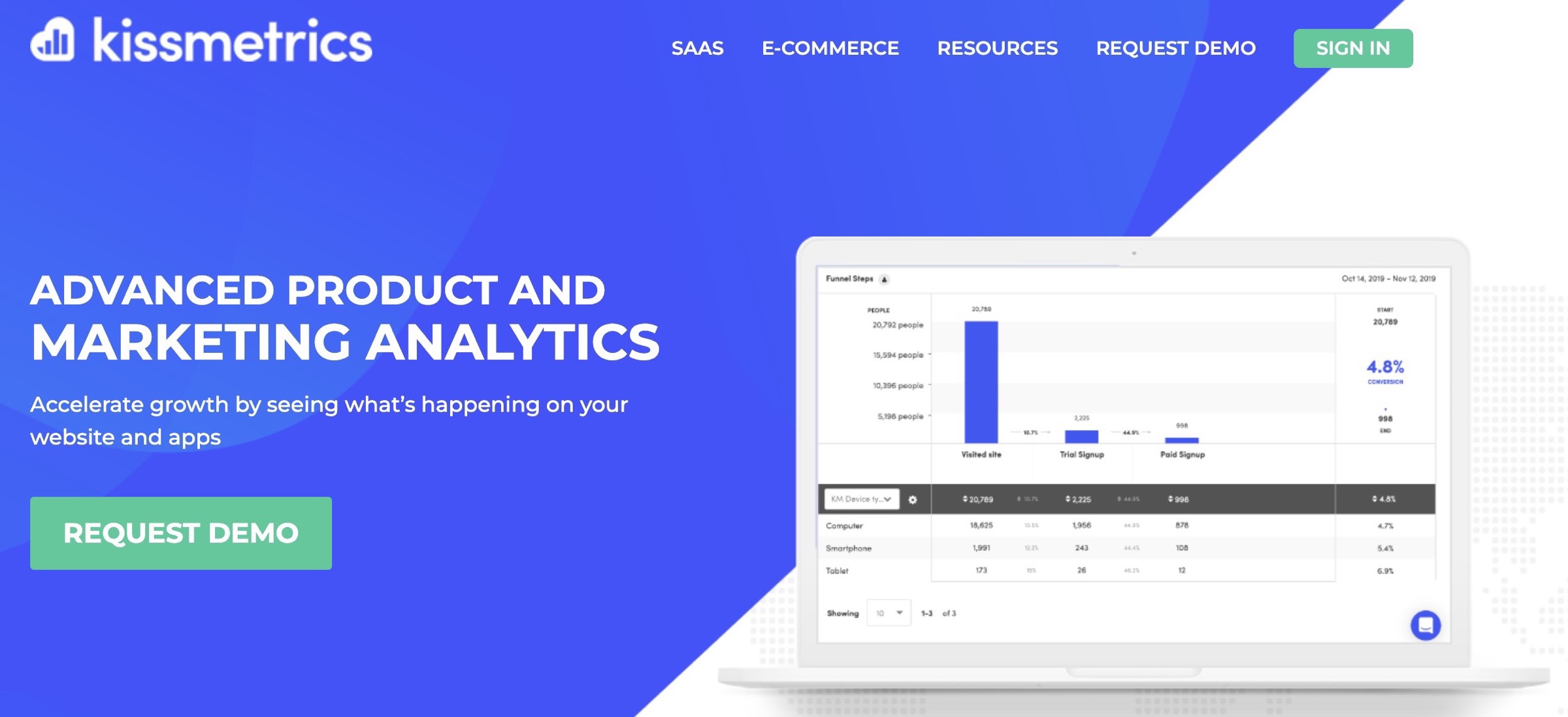
Where Google Analytics has a pretty steep learning curve, you can jump into Kissmetrics easily and immediately.
It has different dashboards to show you what your users are doing on your website, how they got onto your mailing list, and so on. Their data can tell you where your customers are dropping off so that you can better optimize your pages to increase conversions.
Kissmetrics also integrates with Shopify, making it easier for you to collect data if you have a Shopify store.
Notable Features
- Ability to tie data to a real person
- Funnel optimization features
- Customer lifetime value reports
Pricing
Kissmetrics offers three different plans; all billed annually:
- Silver – US$299 per month
- Gold – US$499 per month
- Platinum – custom pricing (contact Kissmetrics)
To learn more about each plan’s features, check out Kissmetrics’s pricing page.
18) Hotjar – Visitor heatmaps for conversion rate optimization
Hotjar shows you what your visitors are clicking on and what they’re interested in, so that you can optimize your site for better conversions.
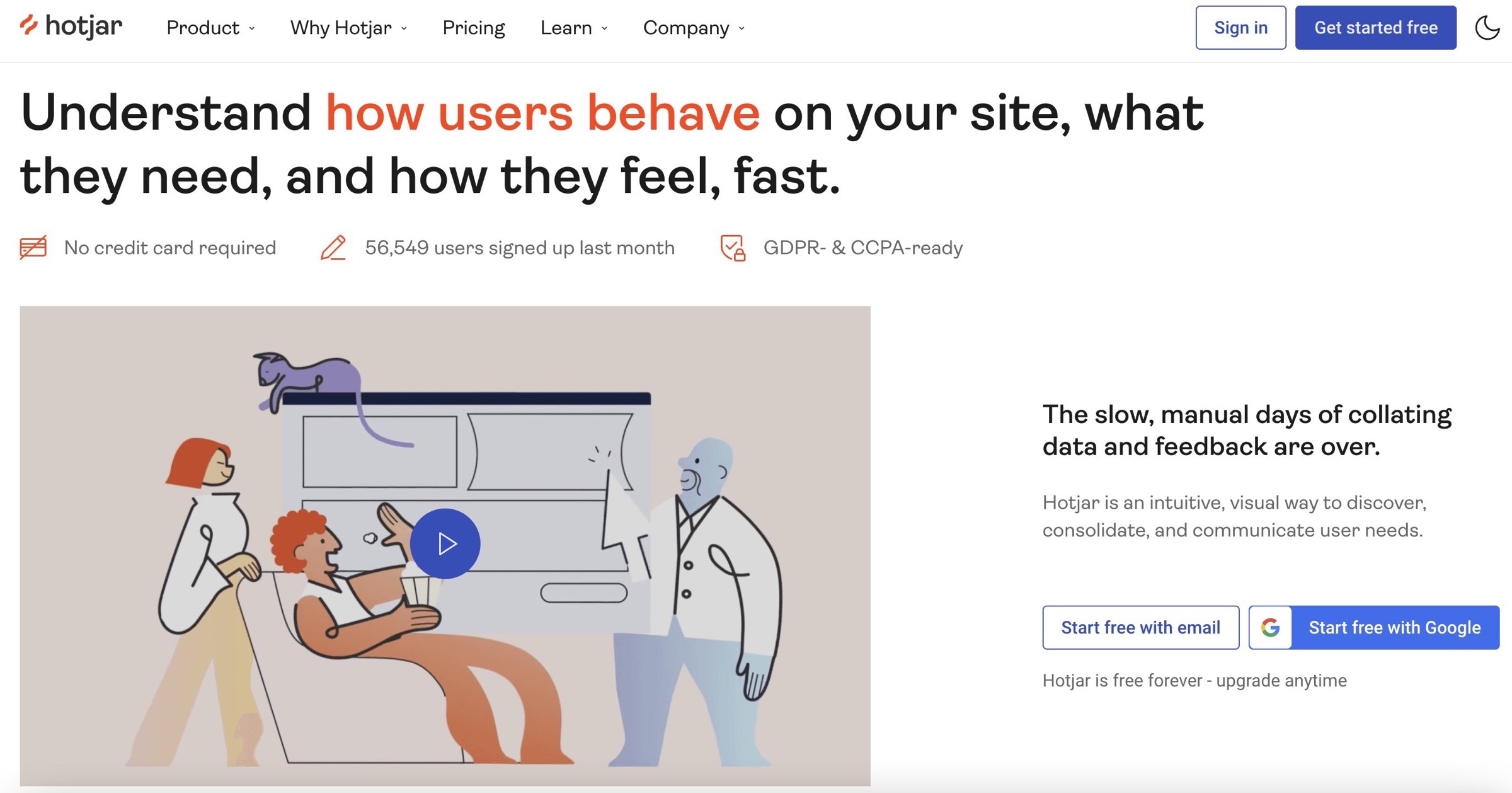
Hotjar has two features that make it easy to gather customer data: Heatmaps and Recordings.
Heatmaps tell you where your visitors are scrolling until and what they’re on. Recordings take a screen recording of how your users interact with your pages for you to review.
If you want to collect even more data, Hotjar also lets you set up pop-up survey forms, on-page exit surveys, and other forms that ask the right questions.
Notable Features
- Heatmaps and Recordings that let you observe how your visitors interact with your webpage
- On-page feedback forms that let you gather zero- and first-party data
- User-friendly interface and easy-to-understand data dashboards
Pricing
Hotjar has a free plan and a couple of paid plans based on what you need.
For their Heatmaps and Recordings, they have three paid Observe plans:
- Plus – US$39 per month
- Business – US$99 per month
- Scale – custom pricing (contact Hotjar)
For surveys and feedback, they have three paid Ask plans:
- Plus – US$39 per month
- Business – US$99 per month
- Scale – custom pricing (contact Hotjar)
You can mix and match Observe and Ask plans based on your needs. Paying yearly will get you a 20% discount.
To learn more about Hotjar plans, check out their pricing page.
19) Qualaroo – Qualitative customer data
Qualarool lets you set up surveys right within your website or mobile app.
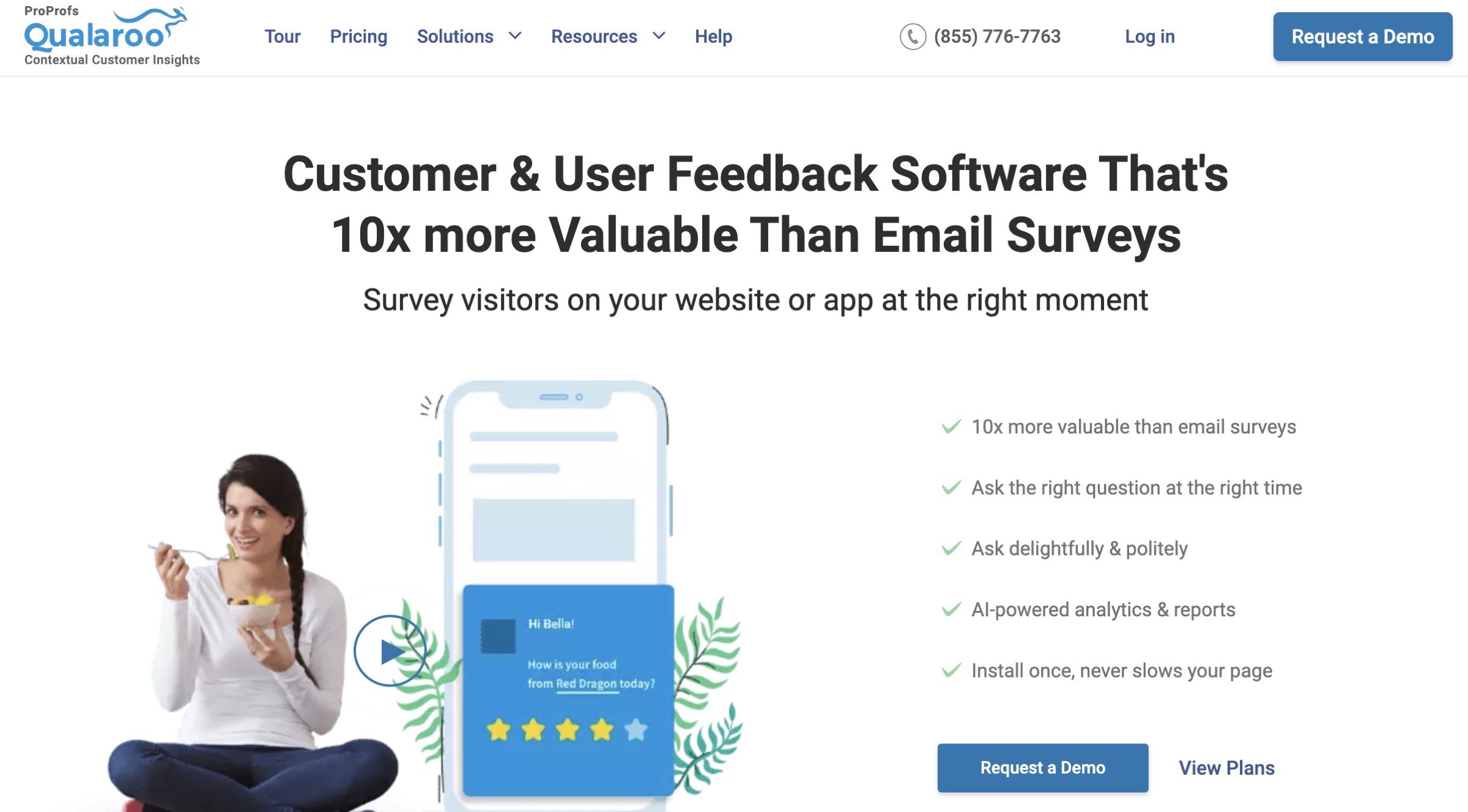
Installing Qualaroo on your webpage will let you ask your customers “the right questions at the right time.”
What that means is that you can set up exit survey pop-ups to figure out why people leave your site. You can also ask your customers for product reviews, website feedback, and app feedback.
Notable Features
- Multi-channel, non-disruptive surveys
- Integrations with WordPress, Shopify, Squarespace, BigCommerce, and other eCommerce platforms
- AI-powered data collection and analytics dashboard
Pricing
Qualaroo offers a 15-day free trial. After that, they offer plans based on the features you need and the number of pageviews you get per month.
If you get 100K pageviews or below, here are the plans they offer:
- Essentials – US$100 per month
- Premium – US$200 per month
- Enterprise – custom pricing (contact Qualaroo)
They also offer add-on features like White Label, Sentiment Analysis by IBM Watson, and In App (iOS and Android).
If you pay annually instead of monthly, they give you a 20% discount.
Learn more about their plan features and potential customizations on their pricing page.
20) Crazy Egg – A/B testing and user analysis
Similar to the other tools on this list, Crazy Egg tells you more about your customers so that you can optimize your site for sales.
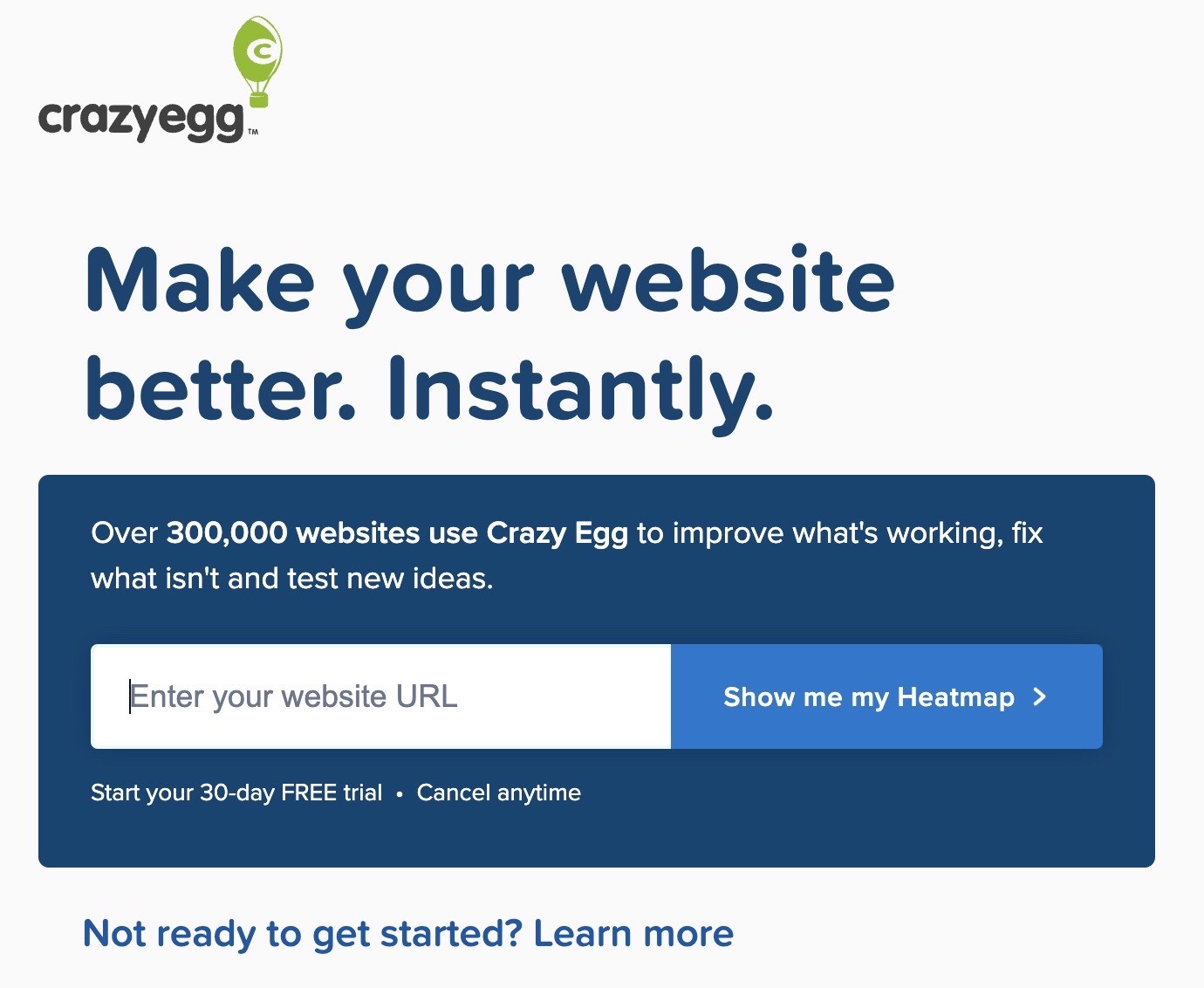
Crazy Egg is very similar to Hotjar—but their A/B testing feature is superior. They make it easy for users to quickly make small changes to their A/B tested webpages to really nail down what changes cause higher conversion rates.
They also track your website visitors’ journeys—from where they came from to where they land on your website. That way, you can figure out how your website is converting based on actual user data.
With both A/B test and behavioral data collection, you can create a site that your target audience loves.
Notable Features
- Customer behavior tracking through heatmaps, session recordings, and A/B testing tools
- Integrates with important eCommerce platforms like Shopify
- Easy editing to get the most results out of your A/B tests
Pricing
Crazy Egg offers a 30-day free trial. After that, you can choose one of their five paid plans (billed annually):
- Basic – US$29 per month
- Standard – US$49 per month
- Plus – US$99 per month
- Pro – US$249 per month
- Enterprise – custom pricing (contact Crazy Egg)
Learn more about what features they offer by heading over to their pricing page.
Wrapping up — Choose the right eCommerce marketing platforms to support your growth
Don’t build your business single-handedly. Choose the right eCommerce marketing platforms to generate more sales, save time, and learn more about your customers. Although many of the tools mentioned above come with a price tag, they will save you effort, reduce mistakes, and provide valuable insights you wouldn’t have otherwise.
Get better results by using the right eCommerce marketing platforms for your business.